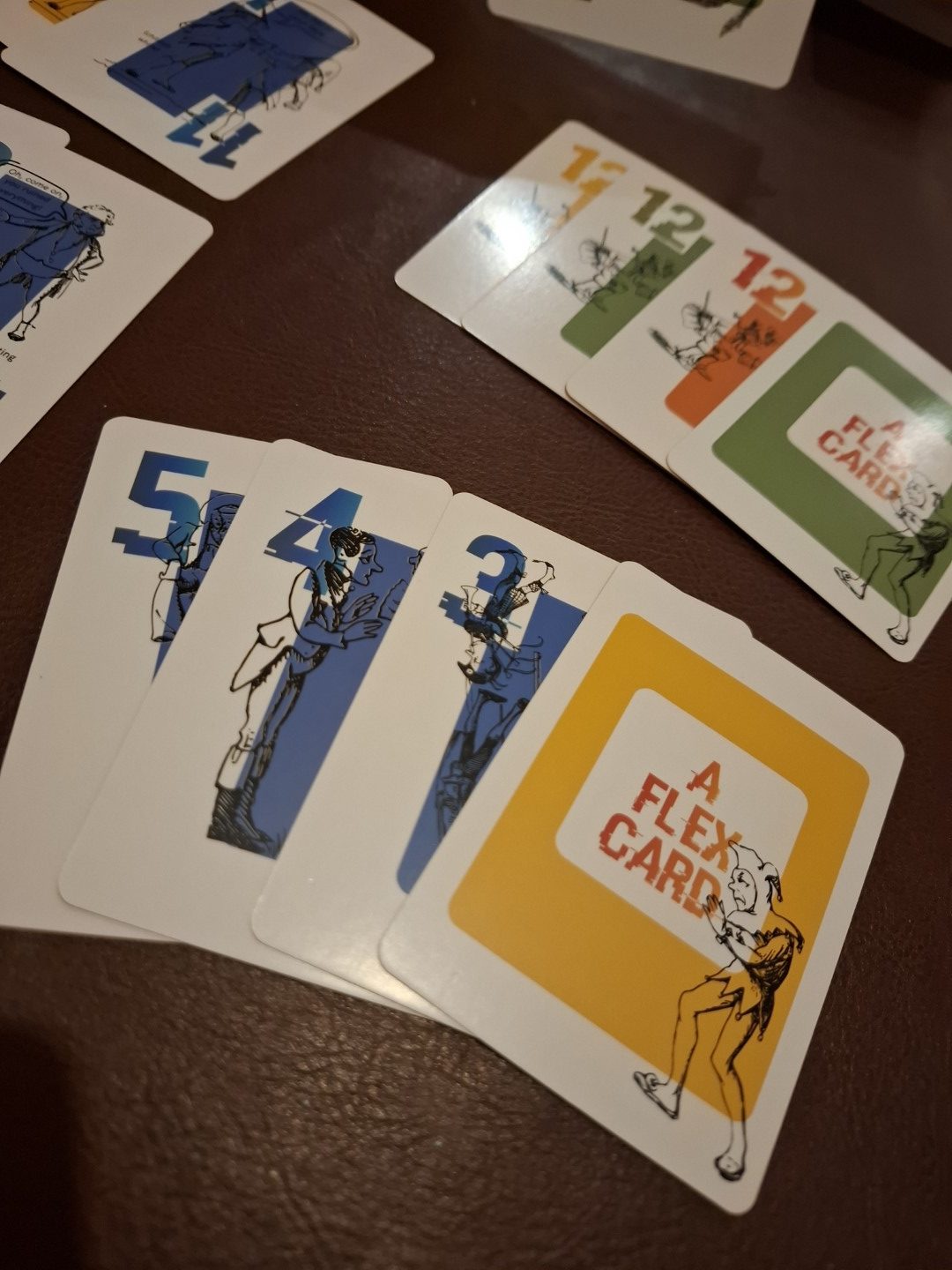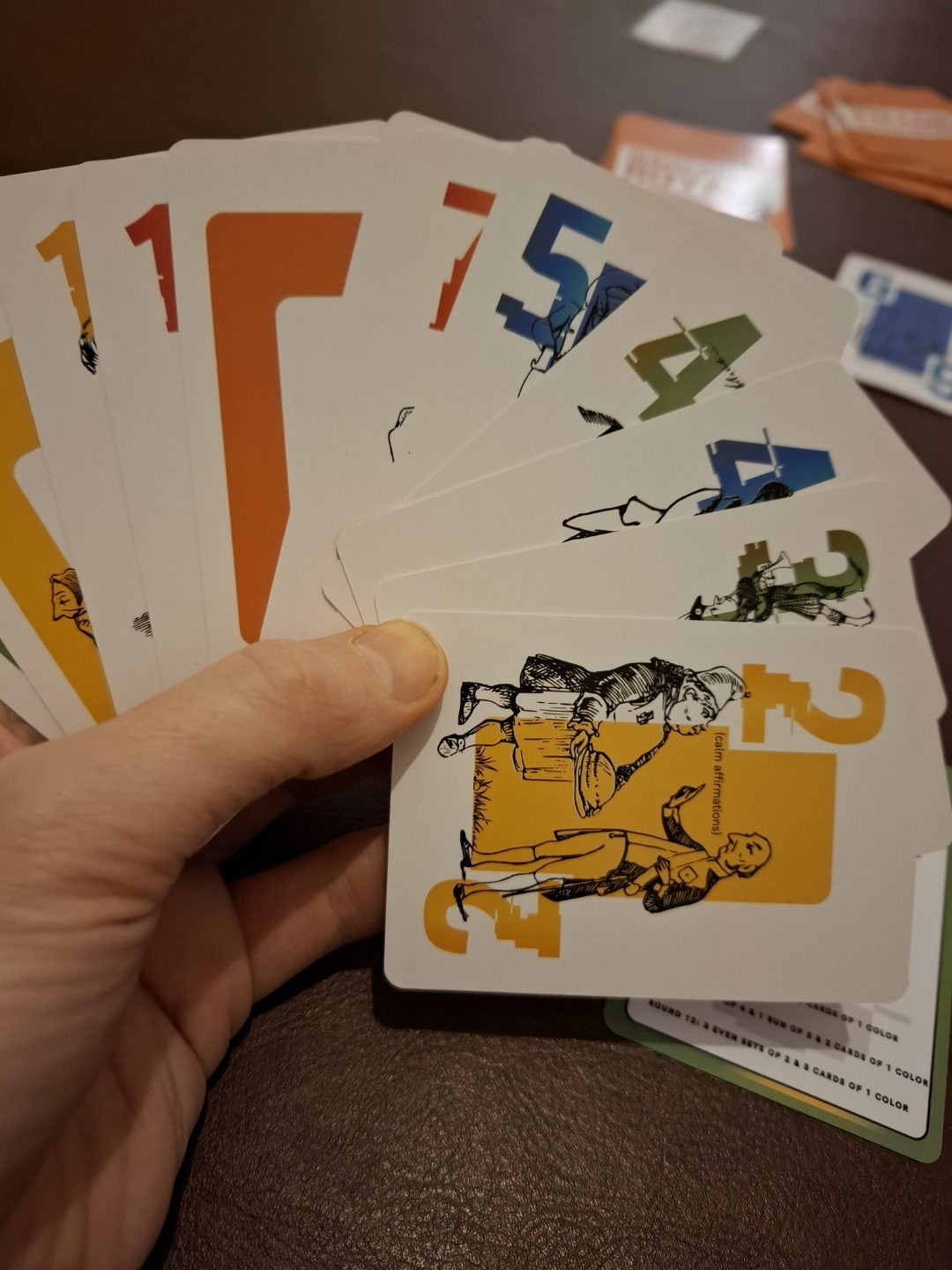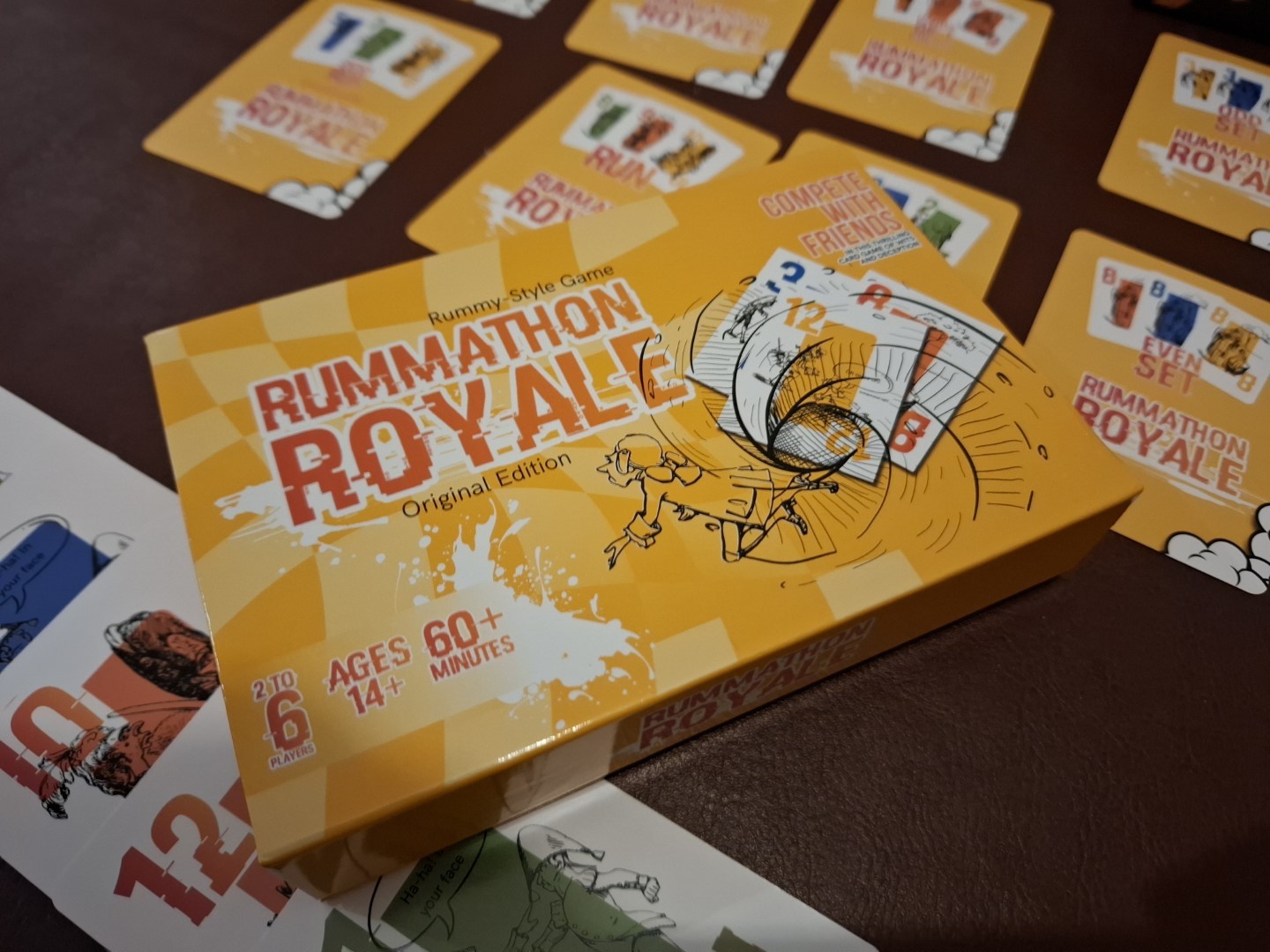I’ll be the first to admit, I’m partial to a game of Rummikub. I know it’s not perfect, but I can appreciate it for what it is. Rummikub is a game my family enjoy, because of its simplicity and familiarity. A bit like my previous review, Snatching Pairs, which we are gifting this Christmas. Rummathon Royale is not a game I’ll be gifting this Christmas.

In Rummikub, the premise is simple. On your turn you’re trying to make sets with tiles in your hand, by placing them on the table in sets. You then get the opportunity to manipulate the tiles through adding and moving tiles between different runs and sets. Well Rummathon Rumble, doesn’t have that manipulation part. Nor does Rummathon Rumble have you playing cards to the table on your turn, but it does have a lot of take that! And who doesn’t love Take that, in a game that is a race to complete 12 rounds. Once a player completes a round, that’s it game over, that player starts in round 2, everyone else is in round 1 still.

How to play
On your turn, you draw a card from the deck – you can only draw from the discard pile if you want to then declare you’ve met your goal. Or if you’ve already played your sequence on the table, and the card in the discard pile can be added to a set or run on the table. The discard pile, is a train of cards, face up, so if you want to take a 2 for example and there’s a 7 and an 8 on top of it, you have to take all three!

After you’ve drawn a card, you can declare you’ve met your sequence (sorry I mean goal) and then in all cases discard a card. Once you’ve got your goal (sorry I mean sequence) on the table, on your turn you can add a card to a set or run on the table. The first player to go out i.e. get rid of all their cards wins the round and scores points equal to the cards left in other players hands. You then reset, and go again, with you starting on the next round’s goal/sequence and other players who didn’t manage to complete their sequence remaining on the same sequence as previously.

I also missed out some minor bits, once you’ve played your sequence, you can declare “Rummathon Royale” in which with your remaining cards, you’ll try and make the next sequence. Noting you in most cases pick up one card a turn (unless there’s lots in the discard) this is unlikely. Now if you’re feeling super lucky, you can attempt “Double Rummathon Royale” which you requires to complete another sequence in the same round, which wins you the game instantly! Good luck doing that! You’re going to need a super discard pile train to manage that.

The special action cards
And I haven’t discussed the special action cards, first up is flex, which is essentially a joker – I’ve no issues with that! Sabotage sees everyone else discard all flex cards in their hand and then shuffle the flex cards and sabotage back into the deck. Bypass, skip a turn, annoying but not anything compared to burden! Burden adds an additional requirement to a player’s goal for that round, and if they complete their sequence but not the burden, well guess what you don’t progress to the next sequence in the next round! Oh and there’s a double burden too. If you play a burden and the player can’t complete it, you’ll score additional points at the end of the round too.

And then there’s block cards, the first block card prevents other players from playing on your sequence, and then the second block card can go on other players, who are then prevented from playing on their own sequence and declaring “Rummathon Royale”. And that means at lower player counts, you can effectively prevent anyone from being able to play cards once they’ve played a sequence, play a block card on yourself – your opponent now can’t play cards to your sequence, play another block card on your opponent, they now can’t play cards to their own sequence. So they’re going to essentially sit and wait until you take turns drawing a card, adding a card to your sequence, discarding a card. And if you happened to have a burden card too, well then you’ve definitely made your opponent super angry and they’ll never want to play the game again.
But it’s all fun right? And what happens if your opponent had played a block card on their sequence and then your sequence too, nobody can play any cards. I don’t think there are enough block cards in the game for that to happen – as I only counted 3, but you can definitely create the scenario of locking out a player.

Final thoughts
Now you might say, but Aaron come on, it’s just for fun, it’s just a game. But that’s the thing, it isn’t fun! Technically it is a game, but there’s little to no decision space here. We timed a round with two players and it took us just over 10 minutes, there are 12 sequences..and not every player will progress to the next sequence in the next round. Neither is it likely that the same player will progress every round, so who knows how long the game will go on for? Needless to say we didn’t find out and abandoned the game after 3 rounds. And I don’t want to play anymore. Now someone will say, Aaron you haven’t played the game enough to explore the strategy, mechanics or how the game really plays.
Trust me, I’ve seen enough to know that Rummathon Royale is a game I do not want to play again. From a component perspective, all the cards, have the same back, including the explanation cards for what a set or run is, and the players goals. Meaning we picked up the cards, took a glance, went “oh they’re all numbers” and shuffled! A simple changes could have been to have different card backs, however, that isn’t going to save this game.

As you know I rate games on a scale of:
Buy or play
Wait for sale or play if you like games XYZ
Avoid

The recommendation
Like Phase 10, it has the same issues, it a) takes far too long b) there is little to no decision making, you draw a card blind from the deck, does it work towards my round goal, nope, okay discard it c) far too much luck from the blind draws d) it’s made inherently worse by the take that cards. Now you can ‘accidentally’ draw from the discard pile (its in the rules) but if you do you have to repeat the sequence again. Why is that even in the rules? If you pick up by accident, put them back?

You’ll probably find that players get left behind in different sequences, or you may find yourself on the end of take that card after take that card. I’d love to even say its a breeze to teach, well the rules are poorly written, and I’ve seen multiple versions of them at this point that still are written ambiguously, for example in the ‘hitting’ rules it says you can add 1 or more cards to your opponents sequence of 3s, and that you can performs ‘hits’ as soon as you play down a sequence, but then in the turn structure doesn’t even cover what to do on your turn once you’ve played a sequence. So do I still draw a card, do I play all my cards down if I can? Again the rules don’t 100% clarify, and these are rules that are written over nearly 4 sides of A4, for a rummy style game – the original rummikub rules don’t even take that many pages!
You’ve also seen me refer to the sequences as goals, to indicate the interchangeable terminology. Rummathon Royale, gets a 100% avoid and potentially one of the worst games I’ve played this year. I think if you like phase 10, you’ll probably like this, but please don’t ask me to play!

